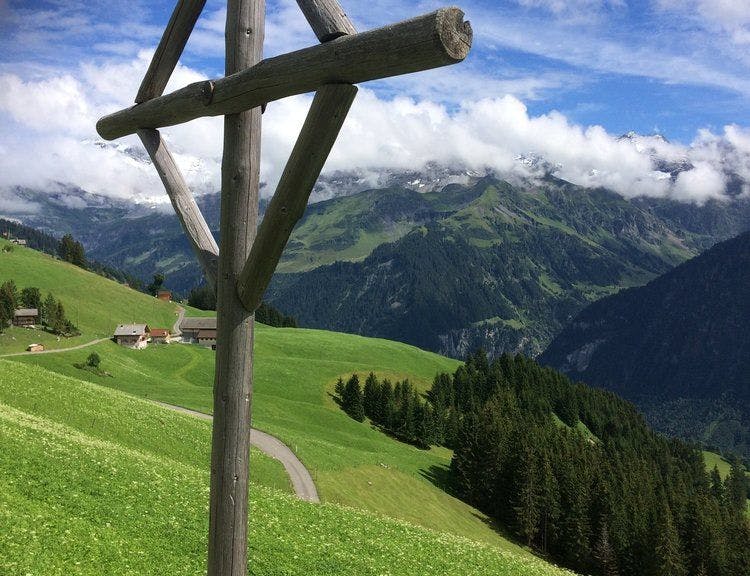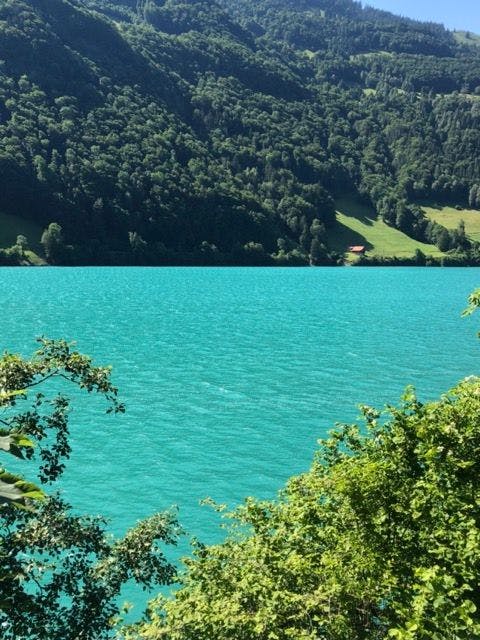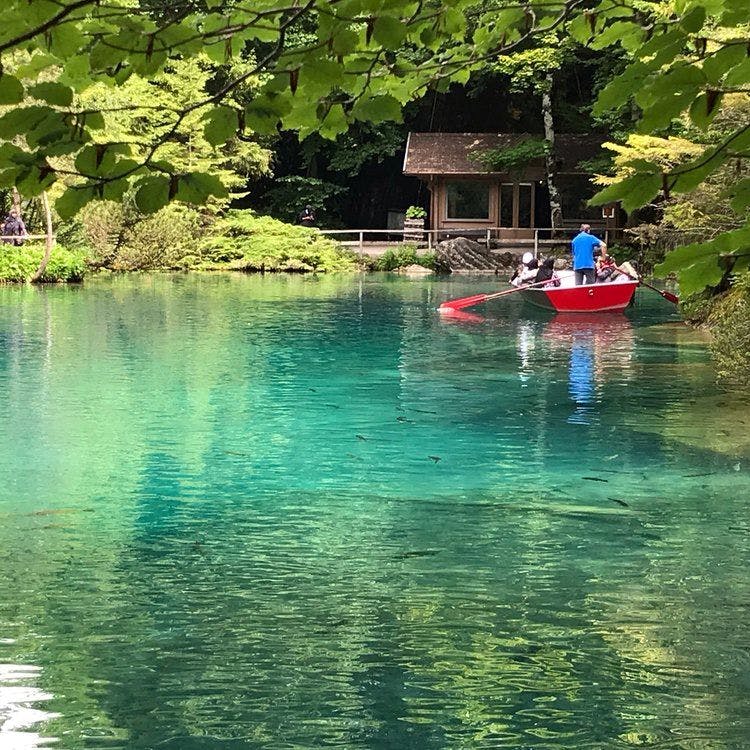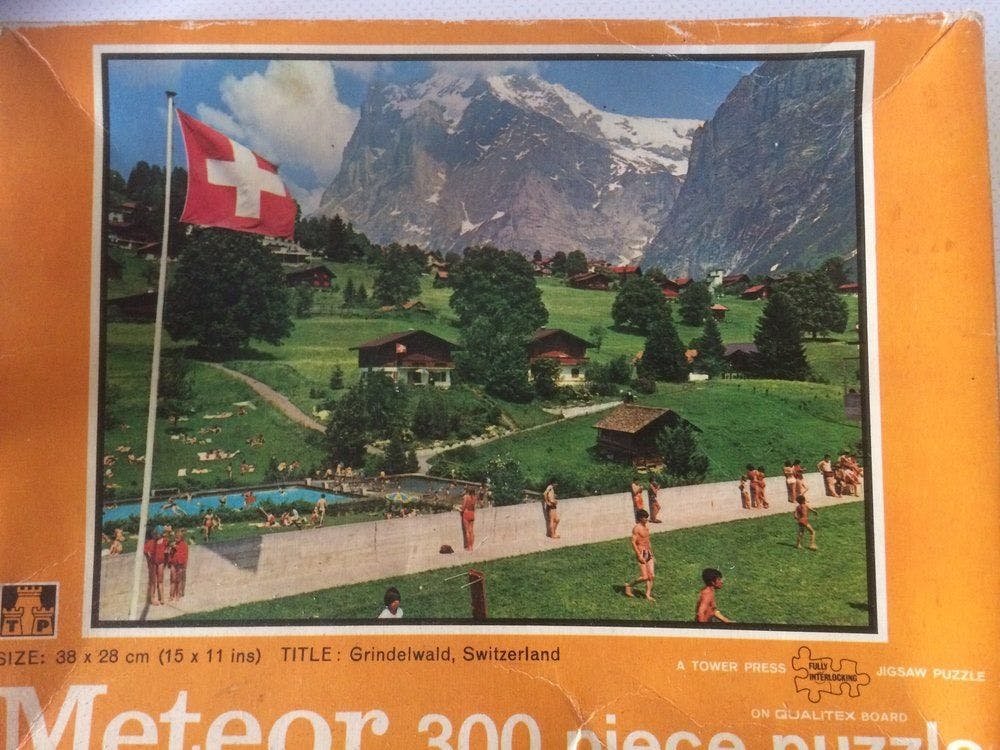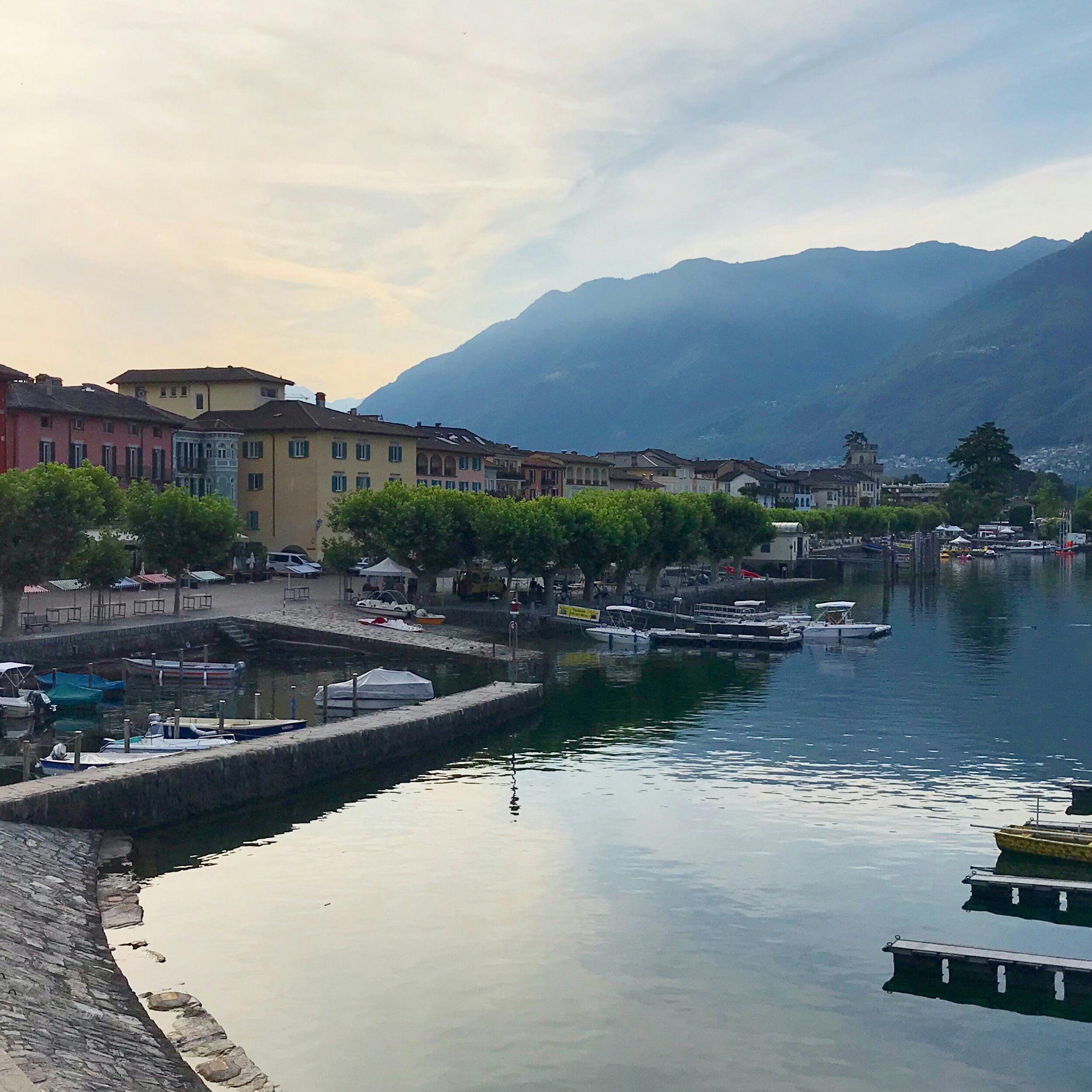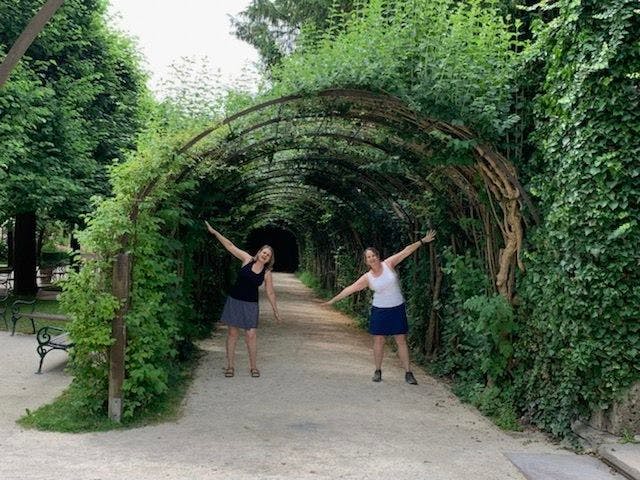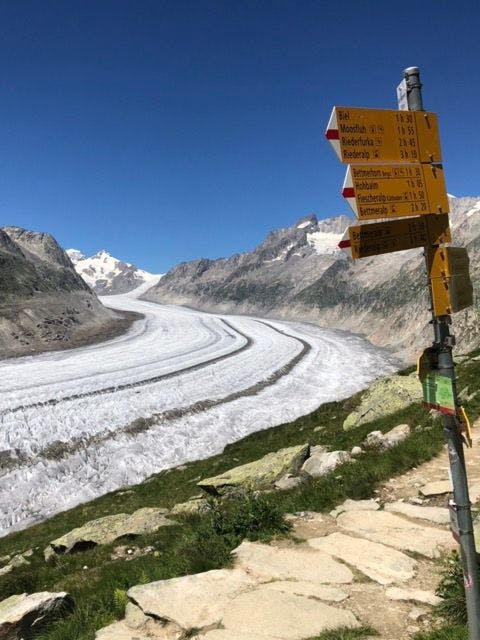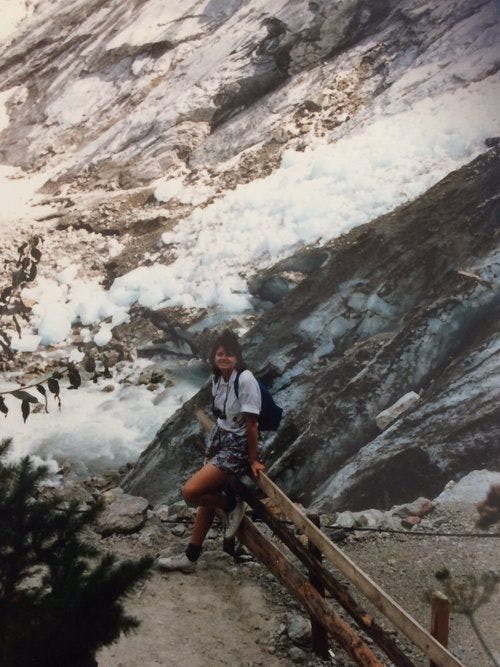
SwitzerlandGLOBAL WARMING- AND THE EFFECT ON THE SWISS ALPS
As a scientist, I was always a little sceptical about the Climate Change debate. Some said the effects on the Earth have been exaggerated, and at one time I agreed- but that was years ago. Seeing the Oberergletscher (Upper Glacier) of Grindelwald from the village in 1989, walking into its ice grotto in 1991 (see below), then walking to its base in 2004 (and noticing the marked changes), then visiting Grindelwald again last year, I can see the devastating effect it that climate change is having on Switzerland as a whole. Here is an extract from my previous Via Alpina blog: Back in 1989, the Firstbahn was a side-facing chairlift... ...and there, in the background, is the Oberergletscher.

In the ice grotto, long since melted away.


From photos taken in 1989, the Oberergletscher is clearly visible
.
.
.
One journey I have undertaken more than once in the Grindelwald region is the Pfingstegg to Stieregg walk: a gradual uphill climb with spectacular views back over Grindelwald and across to the eastern side of the imposing Eiger. I mention Stieregg and the east side of the Eiger in the one sentence because both places have been victims of the accelerated melting of the glaciers, noted not just in Switzerland and Europe, but world-wide. Restaurant Stieregg no longer exists: in May 2005, as the hut was being prepared for opening at the beginning of the walking season, the flagpole out the front was observed to be on an angle, and cracks were appearing in the ground. Experts were called in and the alarming conclusion was that the whole piece of land was going to drop, taking everything with it. The Stieregghütte closed for good, and eventually the land fell away, leaving the building overhanging. The Stieregghütte was destroyed for safety reasons and a new place, Bäregg has been erected nearby, on more stable ground. The reason the land fell away is because the Unterer (lower) Glacier has shrunk away and the permafrost (high altitude soil that remains frozen for more than 2 years in a row) has melted, so it’s obvious what will follow.
We visited Grindelwald in July 2006, and one day we decided on an afternoon swim in the Sportszentrum. The windows of the indoor pool look down the valley and out towards the Eiger, and suddenly it looked like a dust storm had hit the village! We couldn’t understand what was happening (a dust storm- in Switzerland?!) and we were intrigued! By the time we had changed and returned to the car park, it had more-or-less cleared, but we noticed that all the cars were covered in fine dust and the air smelled “earthy”. Later, we learned that we had witnessed the aftermath of a huge rockfall. A large part of the east face of the Eiger had come away, the scale of which could not be appreciated from such a distance- but it was “around half the size of the Empire State Building”, if that helps! Fortunately it was in a fairly isolated area and there were no casualties. We visited shops during our stay last year, talking to proprietors and reminiscing about these events and other changes to the village. Another change we discussed was the disappearance of the Oberergletscher (Upper Glacier). In 1991, my husband and I were able to walk from the Hotel Wetterhorn, up a gravel track and into an ice cave carved into the glacier. Inside its remarkable aqua walls there were ice carvings to admire. Very old pictures show this glacier’s “tongue” reaching down to the edge of the village, so little had changed in centuries- until the ‘90s. In the 30-odd years that have passed, what remains of the glacier is so far up the pass between the Wetterhorn and the Schreckhorn that it is not really worth the long walk up the specially-built stairway to reach it. And the number of wooden steps is ever-increasing. 1991- at the foot of the Oberergletscher Inside the glacier, something no longer possible! All glaciers in the alps are affected by the warming climate, with locals taking to placing large, reflective blankets over parts of the Rhone Glacier to try to slow the inevitable melting process.
The Matterhorn experienced a large rockfall, similar to the event on the Eiger, in 2003. Some experts are predicting that the gradual disappearance of the Permafrost will cause the Matterhorn to permanently change its shape; perhaps lose the angled tip of its pyramidical shape. This would be a disaster: the shape of the Matterhorn is widely recognized. The debate is whether the climate change is a natural, cyclic event that the Earth goes through every hundred thousand years or so, or whether it is due to the human population. The truth probably is that it is a mixture of both factors. All we humans can do is reduce our greenhouse gas emissions, monitor world population and hope for the best.

The Matterhorn
SwitzerlandGLOBAL WARMING- AND THE EFFECT ON THE SWISS ALPS
As a scientist, I was always a little sceptical about the Climate Change debate. Some said the effects on the Earth have been exaggerated, and at one time I agreed- but that was years ago. Seeing the Oberergletscher (Upper Glacier) of Grindelwald from the village in 1989, walking into its ice grotto in 1991 (see below), then walking to its base in 2004 (and noticing the marked changes), then visiting Grindelwald again last year, I can see the devastating effect it that climate change is having on Switzerland as a whole. Here is an extract from my previous Via Alpina blog: Back in 1989, the Firstbahn was a side-facing chairlift... ...and there, in the background, is the Oberergletscher.

In the ice grotto, long since melted away.


From photos taken in 1989, the Oberergletscher is clearly visible
. . .
One journey I have undertaken more than once in the Grindelwald region is the Pfingstegg to Stieregg walk: a gradual uphill climb with spectacular views back over Grindelwald and across to the eastern side of the imposing Eiger. I mention Stieregg and the east side of the Eiger in the one sentence because both places have been victims of the accelerated melting of the glaciers, noted not just in Switzerland and Europe, but world-wide. Restaurant Stieregg no longer exists: in May 2005, as the hut was being prepared for opening at the beginning of the walking season, the flagpole out the front was observed to be on an angle, and cracks were appearing in the ground. Experts were called in and the alarming conclusion was that the whole piece of land was going to drop, taking everything with it. The Stieregghütte closed for good, and eventually the land fell away, leaving the building overhanging. The Stieregghütte was destroyed for safety reasons and a new place, Bäregg has been erected nearby, on more stable ground. The reason the land fell away is because the Unterer (lower) Glacier has shrunk away and the permafrost (high altitude soil that remains frozen for more than 2 years in a row) has melted, so it’s obvious what will follow.
We visited Grindelwald in July 2006, and one day we decided on an afternoon swim in the Sportszentrum. The windows of the indoor pool look down the valley and out towards the Eiger, and suddenly it looked like a dust storm had hit the village! We couldn’t understand what was happening (a dust storm- in Switzerland?!) and we were intrigued! By the time we had changed and returned to the car park, it had more-or-less cleared, but we noticed that all the cars were covered in fine dust and the air smelled “earthy”. Later, we learned that we had witnessed the aftermath of a huge rockfall. A large part of the east face of the Eiger had come away, the scale of which could not be appreciated from such a distance- but it was “around half the size of the Empire State Building”, if that helps! Fortunately it was in a fairly isolated area and there were no casualties. We visited shops during our stay last year, talking to proprietors and reminiscing about these events and other changes to the village. Another change we discussed was the disappearance of the Oberergletscher (Upper Glacier). In 1991, my husband and I were able to walk from the Hotel Wetterhorn, up a gravel track and into an ice cave carved into the glacier. Inside its remarkable aqua walls there were ice carvings to admire. Very old pictures show this glacier’s “tongue” reaching down to the edge of the village, so little had changed in centuries- until the ‘90s. In the 30-odd years that have passed, what remains of the glacier is so far up the pass between the Wetterhorn and the Schreckhorn that it is not really worth the long walk up the specially-built stairway to reach it. And the number of wooden steps is ever-increasing. 1991- at the foot of the Oberergletscher Inside the glacier, something no longer possible! All glaciers in the alps are affected by the warming climate, with locals taking to placing large, reflective blankets over parts of the Rhone Glacier to try to slow the inevitable melting process.
The Matterhorn experienced a large rockfall, similar to the event on the Eiger, in 2003. Some experts are predicting that the gradual disappearance of the Permafrost will cause the Matterhorn to permanently change its shape; perhaps lose the angled tip of its pyramidical shape. This would be a disaster: the shape of the Matterhorn is widely recognized. The debate is whether the climate change is a natural, cyclic event that the Earth goes through every hundred thousand years or so, or whether it is due to the human population. The truth probably is that it is a mixture of both factors. All we humans can do is reduce our greenhouse gas emissions, monitor world population and hope for the best.

The Matterhorn
